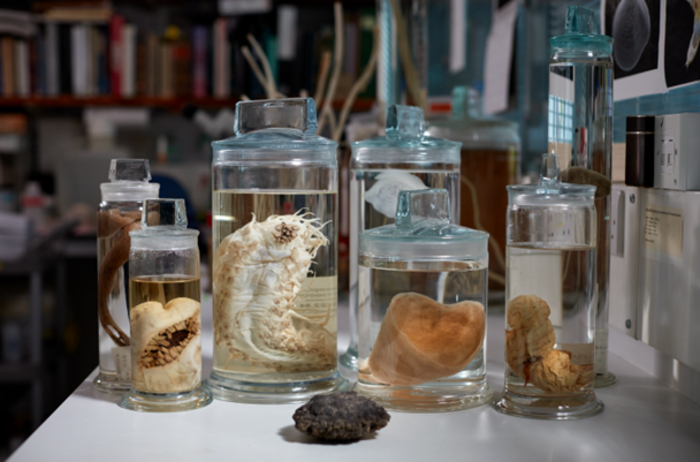There is a massive, mineral-rich region in the Pacific Ocean—about twice the size of India—called the Clarion-Clipperton Zone (CCZ), which has already been divided up and assigned to companies for future deep-sea mining. To better understand what may be at risk once companies start mining, a team of biologists has built the first “CCZ checklist” by compiling all the species records from previous research expeditions to the region. Their estimates of the species diversity of the CCZ, publishing in the journal Current Biology on May 25, included a total of 5,578 different species found in the region, an estimated 88%–92% of which are entirely new to science.

Credit: Trustees of the Natural History Museum London
There is a massive, mineral-rich region in the Pacific Ocean—about twice the size of India—called the Clarion-Clipperton Zone (CCZ), which has already been divided up and assigned to companies for future deep-sea mining. To better understand what may be at risk once companies start mining, a team of biologists has built the first “CCZ checklist” by compiling all the species records from previous research expeditions to the region. Their estimates of the species diversity of the CCZ, publishing in the journal Current Biology on May 25, included a total of 5,578 different species found in the region, an estimated 88%–92% of which are entirely new to science.
“We share this planet with all this amazing biodiversity, and we have a responsibility to understand it and protect it,” said Muriel Rabone, a deep-sea ecologist at the Natural History Museum London, UK.
Spanning six million square kilometers from Hawaii to Mexico, the CCZ is one of the most pristine wilderness regions in the global ocean. To study it, researchers brave the Pacific Ocean on research cruises that employ sampling techniques ranging from the technical, like remote-controlled vehicles that traverse the ocean floor, to the simple, like a sturdy box that lands on the bottom (referred to as “box core sampling”).
“It’s a big boat, but it feels tiny in the middle of the ocean. You could see storms rolling in; it’s very dramatic,” said Rabone. “And it was amazing—in every single box core sample, we would see new species.”
By parsing through over 100,000 records of creatures found in the CCZ taken during these deep-sea expeditions, Rabone and her co-authors found that only six of the new species found in the CCZ—which include a sea cucumber, a nematode, and a carnivorous sponge—have been seen in other regions. They also found that the most common types of animals in the CCZ are arthropods (invertebrates with segmented joints), worms, echinoderms (spiny invertebrates like sea urchins), and sponges.
“There’s some just remarkable species down there. Some of the sponges look like classic bath sponges, and some look like vases. They’re just beautiful,” said Rabone of the CCZ samples. “One of my favorites is the glass sponges. They have these little spines, and under the microscope, they look like tiny chandeliers or little sculptures.”
Going forward, the team emphasizes the importance of increasing cohesive, collaborative, and multidisciplinary research efforts in the CCZ to gain a deeper grasp of the region’s biodiversity. They underline the importance of learning more about the newly discovered species and how they are connected to the environment around them. Additionally, they urge researchers to delve into the biogeography of the region to better understand, for example, why certain species cluster in particular geological regions.
“There are so many wonderful species in the CCZ, and with the possibility of mining looming, it’s doubly important that we know more about these really understudied habitats,” said Rabone.
###
This research was supported by funding from The Pew Charitable Trusts. Additional funding information is available in the Acknowledgements section of the paper.
Images and media provided by the Natural History Museum London are available here. Please contact Samuel Bond at [email protected] with any questions about permissions.
Current Biology, Rabone et al. “How many metazoan species live in the world’s largest mineral exploration region?” https://www.cell.com/current-biology/fulltext/S0960-9822(23)00534-1
Current Biology (@CurrentBiology), published by Cell Press, is a bimonthly journal that features papers across all areas of biology. Current Biology strives to foster communication across fields of biology, both by publishing important findings of general interest and through highly accessible front matter for non-specialists. Visit: http://www.cell.com/current-biology. To receive Cell Press media alerts, contact [email protected].
Journal
Current Biology
DOI
10.1016/j.cub.2023.04.052
Method of Research
Experimental study
Article Title
How many metazoan species live in the world’s largest mineral exploration region?
Article Publication Date
25-May-2023




